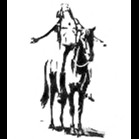Hundreds Commemorate ’88 Uprising on Streets of Rangoon
-
Recently Browsing 0 members
- No registered users viewing this page.
-
Topics
-
-
Popular Contributors
-
-
Latest posts...
-
119
Can no longer renew driving licence to 5 years, now 2 years only
Some people here have/had a life, Mate. -
37
USA Alligator Alcatraz Horror: Families Demand Release of Italians
The right thing to do, would be to immediately take them to the border for deportation. If not possible, put them in shackles, and have work the chain gang doing what ever needs doing. Picking up litter, cleaning sewer, drainage canals. Work the fields, farming crops for themselves to eat. No work, no eat, no shelter. Walk 'em all to California, clean up the interstate on the way, then clean up the poop on the streets and sidewalks of LA, SFO and all the sh!t hole sanctuary cities. AND LIVE STREAM IT ALL. Please come the USA illegally, as we need the extra help. -
24
-
26
Report Press Freedom in Question as White House Ousts WSJ Over Epstein-Linked Coverage
MAGA mobs voted another Putin into White House. Perfectly makes sense why KGB recruited him back in 1987. The right man to destroy USA from within. So eager to be among these big brothers in history. -
86
Why is the Pizza Company not "real pizza"?
Why not when other fruits are deemed acceptable? -
24
Right then Lads I almost lost me leg
If a subject warrants a longer more involved answer, then I shall give one. Otherwise, back to your length of meaningless replies.
-
-
Popular in The Pub

.thumb.jpg.d9f3e54432a0ae65f4d5beb0d2d122ce.jpg)








Recommended Posts
Create an account or sign in to comment
You need to be a member in order to leave a comment
Create an account
Sign up for a new account in our community. It's easy!
Register a new accountSign in
Already have an account? Sign in here.
Sign In Now